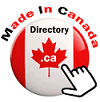Did you know that there are actually Made In Canada guidelines under the Competition Act, the Consumer Packaging and Labelling Act and the Textile Labelling Act? They were actually put in place in 2010 to try to prevent misleading claims for the coveted label. It used to be that products only had to be 51% made in canada to use the claim and appeal to the desire of Canadians to buy at home.
The guidelines state initially that 98% of the cost of the item for sale should be spent in Canada. But how is that a sure thing you ask. I would ask the same thing. It could be made outside Canada, transported here and then sold to the business who is claiming it was made here because it was paid for here. There is a solution to that. 51% of the direct cost of the production still needs to be done in Canada. There is another factor though. It also has to have the most substantial transformation as they call it, completed here in Canada.
If part of the item is made in another country, the product claim must indicate that in their “Made In Canada” statement. For example they could say that a percentage such as 30% is made in another country. We do not however see that in most statements. What I have seen is “We use ethically sourced ingredients” Or that some items in the product are not available in Canada or that the company uses reputable sources.
You likely have also seen terms such as assembled in Canada, or that the item is produced for a company that you know is a Canadian company, or you might see designed in Canada. This means as you might guess, that the product or item is likely not made in Canada but manufactured elsewhere. Then it is imported here and labeled, packaged or assembled. I see this on a lot of food items.
The purpose of the rules is to ensure that products claiming to be made in Canada are in fact made here. According to an article by McMillan published in 2010, those who break the rules can be subject to a $10 million dollar penalty known as an Administrative Monetary Penalty. Now that is steep. For this reason I am thinking that many will not attempt to put one over on us.
Food Made In Canada
In the food industry, the “Made in Canada” claim is actually voluntary in Canada and means the same as “Product Of Canada”. You can sort of relate it to the Canadian Food Guide. It is not a food law, but a recommendation that will contribute to your health if you can utilize it. If a company does make the claim however, there are rules that apply. This means that a business using this label must not use it lightly. If the product is not entirely made here, there must be a statement indicating that imported ingredients are used.
According to the Canadian Food Inspection Agency, another aspect of using the Canadian claim for the production of food also includes the use of Canadian labour. Any deviation from a completely Canadian product must be indicated on the label. This is done by the use of terms such as “Processed in Canada”. For 100% claims, they must in fact be produced using 100% canadian ingredients.
Proud Canadian
We are fortunate that our government is interested in protecting us from scoundrels, and those who are just trying to make a quick buck on the Made In Canada label. When I am researching products for the directory, I look for the specific made in Canada claim. If it is not stated specifically on the site, I send them correspondence to find out exactly where they manufacture or produce their products. If I do not get confirmation, I do not include it in the directory.
It is helpful to know that by businesses using the statement, they are aware that there are high penalties for misleading shoppers. This is especially important during this turbulent time of trade and international economic uncertainty.
Use the links provided in this article to conduct further research if you like. There is a lot of information out there that is easily accessible but sometimes difficult to read. If there is anything you are curious about or would like me to research, simply let me know and I will get my antenna going.
